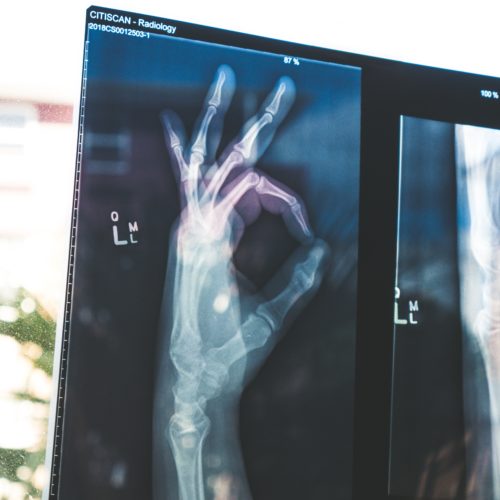With opioid death toll rising, leaders seek new, better answers
This article appeared in the 2022-23 edition of Perspectives.

Credit: Canva
Public officials throughout the United States and Canada are grappling with a third wave of the opioid crisis that is far deadlier and more pervasive than those preceding it. Facing this growing threat, leaders are seeking new answers.
“It is no secret that this is simply not getting better in New England,” said Gordon Smith, Maine’s state director of opioid response, during a panel discussion at the 2022 CSG East Annual Meeting. “We have not been successful in keeping people alive to get them into treatment.”
Over 100,000 Americans died from an overdose in 2021, and experts estimate that around three-quarters of those deaths involved opioids. The numbers represent a nearly 30 percent increase in mortality from the year before, even after many jurisdictions greatly expanded access to life-saving emergency drugs like naloxone.
“The amount of people that are dying, it’s not a drug anymore. It’s like you’re buying a casket,” said one participant interviewed for a study published in October in the Harm Reduction Journal.
The rapid proliferation of fentanyl and synthetic opioids — far more potent than the heroin and prescription painkillers that drove overdose deaths in the 2000s and 2010s — came at a particularly bad time for health officials already working overtime to combat the epidemic. While attention and resources were shifted to address the COVID-19 pandemic, they say, tens of thousands of Americans struggling with opioid use disorder (OUD) became more isolated and at higher risk of overdosing.
Harm reduction
For the thousands of public officials seeking more effective solutions, there is some good news, said Carol Wei, an acute care nurse from Brooklyn who joined the Annual Meeting panel.
Medication is available to treat substance use disorder (SUD), including methadone, buprenorphine, and naltrexone, all three of which are recommended by the FDA and medical experts as treatment options.
Importantly, Wei said, new “X-waivers” authorized through the Substance Abuse and Mental Health Services Administration (SAMHSA) are making some of these medications more widely available to caregivers of all kinds. Wei urged wider public messaging on the availability of these waivers.
In many cases, new medicines and treatment options simply never reach those who need them, said Brandon Marshall, a professor at the Brown University School of Public Health.
A recent Pew study shows the many barriers that still exist at the state level for those seeking to access opioid treatment programs — the only health care facilities that can offer patients all three forms of FDA-approved medication for OUD.
Harm reduction, Marshall explained, is the key to preventing deaths among those who are not currently seeking treatment. The term refers to a wide array of policies, programs, and practices that aim to minimize negative health, social, and legal impacts associated with drug use.
Lawmakers may already be familiar with such measures, including wide distribution of naloxone (commonly seen under the brand name Narcan), test strips to alert people who use opioids and other drugs to the presence of fentanyl, and needle exchanges.
Needle exchanges are especially important in Québec, said Richard Cloutier, who recently retired from Québec’s Ministry of Health and Social Services.
“Québec now has 1,200 centers where people can get needle exchange: in community groups, pharmacies, [etc.],” Cloutier said during the panel. “Our primary health services make them available too, which is unique in Québec. Even rehab facilities — which mostly focus on abstinence — have needle exchange available. It’s that important and effective.”
But Québec didn’t stop there. After public health leaders conducted a review of academic literature on harm reduction in 2009, it became clear that still more options were available. The effectiveness of needle exchange led to the first safe consumption sites in Quebec, Cloutier said.
Supervised consumption sites
Supervised consumption sites (SCS) are designated centers where people can use previously obtained substances under the safety and supervision of trained staff.
There are more than 200 SCS operating in 14 countries around the world today. The first sites in North America were opened in Vancouver in 2003, amid a growing HIV and overdose emergency. Similar programs are up and running, with federal and regional support, in British Columbia, Alberta, Ontario, and Québec.
According to Marshall, who was on the team that studied the initial impact of Canada’s first SCS in Vancouver, these sites reduce HIV and other infectious diseases, prevent overdose and public disposal of syringes, and — most importantly — “show that overdose deaths are preventable.”
“Despite millions of injections at the Vancouver facility, there has never been a death there, nor in any supervised consumption site in the world,” he said.
Recent studies published in the academic journal Drug and Alcohol Dependence also show that documented criminal activity near these sites — both those operated legally and illegally — “decreased rather than increased.”
Furthermore, a 2022 study published in the Harm Reduction Journal found that “overdose management at an SCS creates cost savings by [avoiding the need for] emergency department and pre-hospital ambulance services.” After close monitoring of an SCS in Calgary from November 2017 to January 2020, the study found that each overdose managed at the SCS produced “approximately $1600 CAD in cost savings, with a savings of over $2.3 million for the lifetime of the program.”
Advocates and officials also stress the importance of reducing the impact on increasingly strained local hospitals and emergency medical services.
In the United States, some of the first attempts to open SCS, including one in Philadelphia in 2019, were blocked by the U.S. Department of Justice, which cited a federal law preventing the management of any place for unlawfully using a controlled substance.
But, as outlined in an April 2022 White House memo, federal guidance has shifted toward “harm reduction to meet people where they are and engage them in care and services,” opening a path for advocates to open the first safe consumption sites in the United States.
In November 2021, New York City opened the nation’s first SCS. During the first official day in operation at two Manhattan facilities authorized by the city, trained staff reversed two overdoses, the New York Times reported.
This year, Rhode Island became the first state to legalize supervised drug consumption sites.
“I want to thank Canada, because we could not have done this without the decades of progress they made while people were dying around us,” said Joshua Miller, Rhode Island state senator, who was a prime sponsor of the legislation.
Miller emphasized the role CSG East played in his work drafting and passing the legislation.
“I met another legislator at a meeting just like this one, in 2014, where Delegate Dan Morhaim (Maryland) — also an ER doctor — started talking about [how] we are not doing enough and here’s what we should do.”
Miller explained how a 2015 task force, started by the then governor Gina Raimondo, led to legislation and positive progress.
“We seemed to be having an impact, but that quickly went away around 2019 when overdoses shot up almost 25 to 29 percent. Then, based on overdose levels, in 2019, we thought it was time to introduce legislation to permit harm reduction centers with a safe consumption component,” he said.
Eventually, Miller said, opposition inside and outside of the chamber eroded in the face of rising fatalities, and he and his colleagues passed a bill (S. 0016B), with overwhelming support.
The legislation will enable a two-year pilot program. The first SCS are expected to open in 2023.





